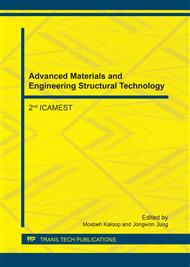p.127
p.133
p.142
p.147
p.157
p.162
p.167
p.173
p.179
Energy Conservation in Refrigerated Vehicles through Prospective Light Weight Insulated Panel
Abstract:
Sustaining the shelf life of fresh food remains a herculean task to most farmers as cold chain must remain unbroken in order to maintain the quality of fresh food. The concept of this research is to reduce energy consumption in refrigerated vehicles through light weight insulated panel as this medium could effectively reduce the payload of the entire vehicle. Part of the progress made in this work, is to develop five different composite cover sheet for insulated panel using fibre loading and orientation as manufacturing parameters and results show that oriented reinforced composite materials offer significant weight reduction compared to un-oriented composite cover sheet. The panel weight of these new materials were estimated using all the conceptual parameters of a refrigerated vehicle and the results indicate that composite reinforced with 10%wt. of fibre at 30o orientation in the matrix, offers the best panel weight reduction with 5.2380Kg/m2 and 6.7380Kg/m2 for 50mm and 100mm insulation thicknesses, respectively.
Info:
Periodical:
Pages:
157-161
Citation:
Online since:
April 2017
Authors:
Price:
Сopyright:
© 2017 Trans Tech Publications Ltd. All Rights Reserved
Share:
Citation:


